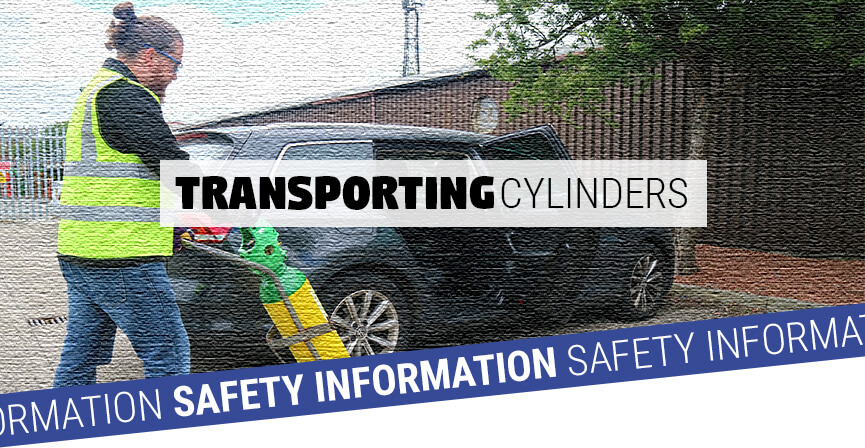Transporting Gas Cylinders for Personal Use

With extensive articles and regulations on the subject of transporting gas cylinder(s), we have outlined the best practice guidelines to ensure a safe journey.
Before Placing the Cylinders in your Vehicle
- Ensure that all valves are securely closed
- Make sure that ancillary equipment such as regulators, hoses or torches are disconnected
- Check that there are no leaks from the cylinder
- Remove any objects from the floor of the vehicle that could cause a puncture
- Ensure the cylinders are secured to avoid any movement or risk of injury – single small cylinders can be placed on the floor of an empty passenger seat and ideally secured by a bag, box or straps
- You may need to inform your insurance provider before transporting gas cylinders in your vehicle
For a Safe Journey
- Don’t let the cylinder come into contact with any heat
- Make sure that your car is not overloaded, and all cylinders are secure
- Ensure that the gas cylinders are stored in an open well-ventilated area or a car with the windows open
- No smoking in or near the vehicle
- A fire extinguisher is strongly recommended by BCGA and ADR but is not a legal requirement
- If possible, do not leave your car and cylinder unattended
- You must be fully aware of the gas content of the cylinder(s) you are transporting in order to inform emergency services or take necessary actions in case of a leakage or incident. It is recommended to carry a safety data sheet with you when transporting gas cylinders – available for download:
At the End of the Journey
- Turn the engine off
- When removing the cylinder from the vehicle, make sure to wear appropriate protective equipment
- Avoid free-standing cylinders – move to your desired location and fasten securely with a hard-wearing rope, chain or straps
If a Leak is Discovered
- Pull over in a safe place, isolated from flammable substances and flames
- Turn the ignition off
- Ensure all passengers are out of the car and move to a safe distance away from the vehicle
- Ensure doors and boots are open to ensure greater ventilation
- Only use mobile phones and electric keys once you have moved away from the vehicle
- Do not smoke near the vehicle
- If the leaking cylinder contains carbon dioxide, do not touch any liquids pooling from the leak as it may result in cold burns
- If a valve was open and can safely be closed or the leakage can be contained, please ensure the vehicle is well ventilated before continuing your journey
- If the leak cannot be stopped and it is safe to do so, remove the cylinder from the vehicle and contact emergency services with your exact location as well as the type and size of the gas cylinder involved
If you need any further advice or information, please don’t hesitate to give our team a call on 0800 433 4331.
Disclaimer: At the time of writing (April 2019), all details are correct and adhere to legislation and laws. The information has been provided to encourage best practices and ensure you consider safe practices when transporting gas. The information used in this article was obtained from EIGA, BCGA, and The Department for Transport.
Article by Catherine McGowan | Visuals by A


